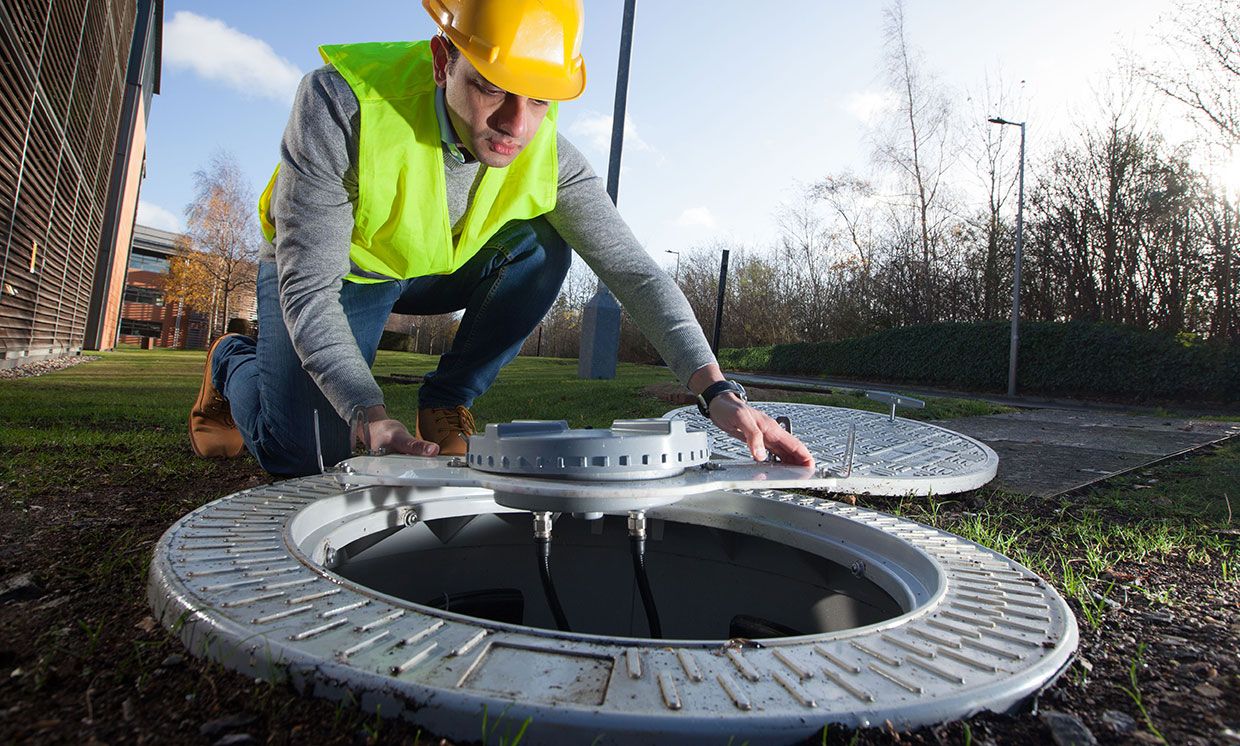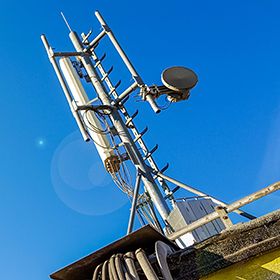INSIDER COMMENT: The article you will read is all part of the subterfuge to confuse the real roll out of 5G.
This article was linked from the Brookings Institute website.
It’s a Psyop!
INSIDER COMMENT: The article you will read is all part of the subterfuge to confuse the real roll out of 5G.
This article was linked from the Brookings Institute website.
It’s a Psyop!
EXCERPT:
On the same day as the conference, The United Nations International
Telecommunications Union (ITU) issued a press release promoting global wireless
technology including: regulatory sandboxes of enterprise; ‘start-up and experiment’
interfaces and 5G projects”. The ITU sponsored a symposium in Geneva and produced
“guidelines for encouraging policy and regulatory measures to facilitate the deployment
and use of emerging technologies for affordable digital infrastructure and services”.
Nowhere is the issue of planetary security, or health and safety addressed.
EXCERPT:
As the National Security Strategy of 2017 made clear, access to spectrum is a critical component of the technological capabilities that enable economic activity and protect national security. Wireless communications and associated data applications establish a foundation for high‑wage jobs and national prosperity. While American industry continues to extract greater and greater value from spectrum, each technological leap also increases demands on its usage. Those demands have never been greater than today, with the advent of autonomous vehicles and precision agriculture, the expansion of commercial space operations, and the burgeoning Internet of Things signaling a nearly insatiable demand for spectrum access. Moreover, it is imperative that America be first in fifth-generation (5G) wireless technologies — wireless technologies capable of meeting the high-capacity, low-latency, and high-speed requirements that can unleash innovation broadly across diverse sectors of the economy and the public sector. Flexible, predictable spectrum access by the United States Government will help ensure that Federal users can meet current and future mission requirements for a broad range of both communications- and non-communications-based systems.
EXCERPT:
Some hear “5G” and just think it means faster connection speeds. However, it goes beyond that. As it matures, 5G is expected to alter the very DNA of our user experience in dramatic, exciting ways—from leisure to healthcare to retail to manufacturing to finance and beyond.
To imagine what’s coming, it helps to look back where we’ve been. How would your business be faring if you never adopted any mobile technology beyond the 2G world? It’s like opting to keep the abacus instead of upgrading your team to computers and spreadsheets.
In this whitepaper, we will examine some of the key drivers of 5G innovation. We’ll look at 5G as a new experience—and as a possible enabler of radically new ways to do business. Finally, we’ll also look at a timeline of our path to 5G, and what you can do to prepare for what promises to be a the next great, world-and-mind altering experience.
EXCERPT:
Introduction: What the Nation Faces
Across the nation, we experience major threats nearly every year: hurricanes, wildfires, flooding, droughts,
and other serious disasters. For these events, the nation has well-established response processes where the
federal government serves as a backstop for the robust efforts of individuals, businesses, communities, and
states. Even as severe weather increases, the nation has steadily improved its ability to respond to growing
disasters and resulting outages—improving planning and coordination, hardening infrastructure, and
building strong mutual aid agreements.
The risk posed by a catastrophic power outage, however, is not simply a bigger, stronger storm. It is
something that could paralyze entire regions, with grave implications for the nation’s economic and social
well-being. The NIAC was tasked to examine the nation’s ability to withstand a catastrophic power outage
of a magnitude beyond modern experience, exceeding prior events in severity, scale, duration, and
consequence.
EXCERPT:
The electromagnetic spectrum (EMS) is a broad area of activity characterized by physically observable activities such as visible light and
lasers and unobservable phenomena such as microwaves and electromagnetic energy. EMS manifests through various frequencies and wavelengths
produced by natural sources like solar storms or artificially by hardware such
as radar or nuclear weapons. EMS impacts every domain of warfare.
On 20–22 August 2018, the Electromagnetic Defense Task Force (EDTF)
hosted an inaugural summit in the National Capital Region (NCR). The summit was designed to aid and encourage actions to recover footing where our
technological lead in EMS is being challenged. The summit was also designed
to address direct EMS threats to the United States and its allies. While some
issues have existed since the 1960s, the window of opportunity to mitigate
some electromagnetic threats is closing. Meanwhile, many existing threats
have gained prominence due to almost universal integration of silica-based
technologies into all aspects of modern technology and society
EXCERPT:
The vision of a 5G network is usually that of an intricate wireless technology offering high data speeds and responsiveness on our mobile phones. Integral to the success of 5G technology is the extensive optic fibre cable (OFC) network that runs underground—5G’s characteristic higher data speeds and throughputs are greatly influenced by these heavy-duty networks that impact both the wireless side and wireline side of the infrastructure. In fact, 5G’s formidable network performance goals are heavily predicated on a massive availability of fibre connectivity, to cell sites and beyond.




The inconvenient truth of future 5G networks is that their increased high-speed bandwidth, and the use of the millimeter wave spectrum (the radio spectrum above 30 gigahertz) to achieve it, comes at a price: Those radio signals barely propagate around the corners of buildings.
To overcome this issue, the strategy has been a combination of small cells with massive multiple-input multiple-output (MIMO) antennas to increase coverage. Small cell deployment will be so extensive that the Small Cell Forum predicts 5G small cell will overtake 4G small cells by 2024. The total installed base of 5G or multimode small cells will reach 13.1 million by 2025, constituting more than one-third of the total small cells in use.
So, how do you manage to get all of these small cells dispersed throughout a city landscape where buildings are everywhere and there’s little open space for signals to travel?
Engineers at Vodafone, headquartered in the United Kingdom, have come up with an ingenious solution: make manhole covers do double duty as antennasfor mobile communications. This clever solution manages to avoid all the troubling issues that had worried many observers about the proliferation of small cells. It eliminates traffic disruptions from street construction, and there are no antennas awkwardly placed on buildings, marring the appearance of a neighborhood.
This solution is currently being used for existing 4G networks, but Vodafone engineers believe this could be a solution for future 5G networks as well. “The manholes do provide an opportunity to deliver solutions in dense urban environments,” said James Grayling, senior network deployment manager, Vodafone UK.
While there is a possibility that the manhole covers could be used for 5G networks—and Vodafone gives a fair amount of credence to the connection in their press release—a Vodafone spokesperson remained noncommittal as to whether this will indeed be a part of Vodafone’s overall 5G strategy.
“We envisage that we may be able to use the manhole coverage solutions for 5G rollout going forward but this is still to be decided,” said Ally Stevens, a network media relations manager for Vodafone UK.
Nonetheless, Grayling did reveal some of the manhole antennas’ impressive capabilities. “The antenna currently being used has a frequency range of 1695 megahertz to 2690 Mhz, and is being used with 4G where download speeds of up to 195 megabits per second can be achieved,” said Grayling.
While it may seem that the big metal manhole covers would interfere with signals, Grayling insists that is not the case.
“The manhole does not interfere with the mobile signals, although there is a small level of power loss caused by the manhole,” said Grayling. “This is taken into account when designing where we want to deploy such solutions.”
It’s not yet clear how extensive the deployment of the special manhole covers will be. When asked whether there was any number of manhole antennas they were targeting to be put out into the field, Vodafone’s spokespeople demurred. “We are in the process of identifying assets in our fixed network that can be best utilized to meet the needs of the mobile network,” was all Grayling would say in response.
https://www.sagaciousnewsnetwork.com/hundreds-of-birds-dead-during-5g-experiment-in-the-hague-netherlands/